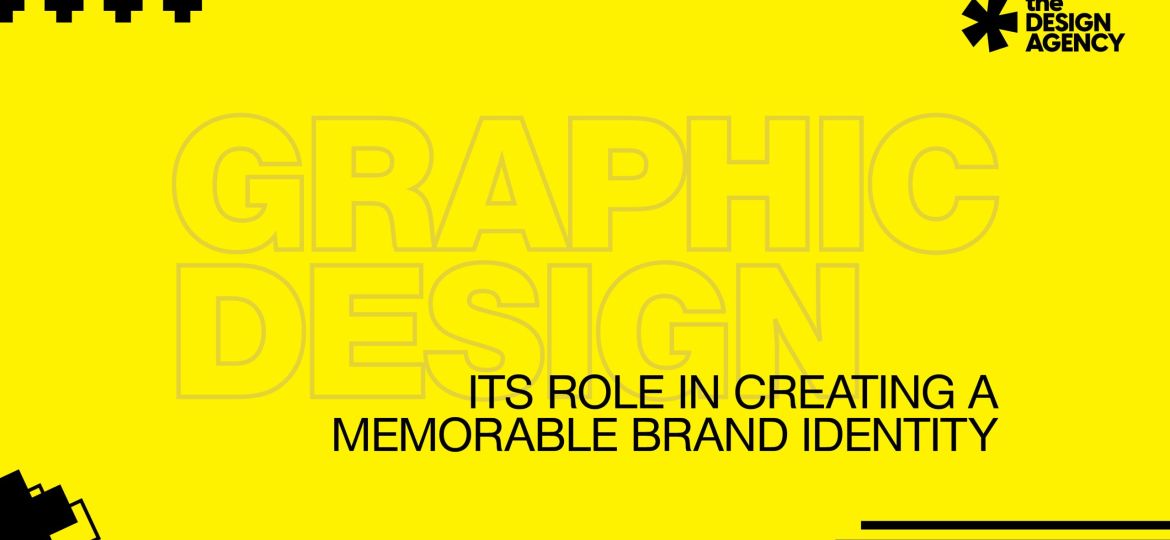
The Role of Graphic Design in Creating a Memorable Brand Identity
In today’s crowded marketplace, creating a memorable brand identity is pivotal to the success of any business. And one of the key elements in shaping that identity is graphic design. But what exactly is the role of graphic design in this process and how does it contribute to the creation of a distinctive brand?
Graphic design, with its ability to visually communicate a brand’s values, personality, and message, plays a critical role in forming a strong brand identity. Through carefully crafted logos, typography, color palettes, and imagery, graphic designers have the power to evoke emotions, establish credibility, and differentiate a brand from its competitors.
By creating visually appealing and consistent brand assets, graphic design helps businesses build recognition and trust with their target audience. Whether it’s through a website, packaging, advertisements, or social media content, these elements work together to create a cohesive visual experience that helps consumers connect with the brand. In this digital age, where attention spans are short and competition is fierce, graphic design has become an indispensable tool for businesses to grab attention, make a lasting impression, and build a loyal customer base.
In conclusion, the impact of graphic design on creating a memorable brand identity cannot be overstated. It is a powerful tool that helps businesses communicate their values, differentiate themselves, and ultimately build a strong and recognizable brand.
The importance of a strong brand identity
A strong brand identity is the foundation on which successful businesses are built. It goes beyond just a logo or a tagline; it encompasses the overall perception and image that consumers have of a brand. A memorable brand identity helps a business differentiate itself from competitors, build trust and loyalty among customers, and create a lasting impression in the minds of consumers.
A well-defined brand identity serves as a compass for businesses, guiding their marketing efforts, communication strategies, and overall brand experience. It helps businesses establish a unique position in the market and effectively communicate their values, personality, and message to their target audience. Without a strong brand identity, businesses risk blending in with the crowd and becoming forgettable in the eyes of consumers.
Creating a strong brand identity requires careful consideration and strategic planning. It involves defining the brand’s core values, understanding the target audience, and crafting a unique brand positioning. Graphic design plays a crucial role in this process by visually translating these brand attributes into tangible elements that consumers can see, feel, and connect with.
Elements of a memorable brand identity
A memorable brand identity consists of several key elements that work together to create a cohesive and impactful brand experience. These elements include the logo, typography, color palette, imagery, and overall visual style.
The logo is often the most recognizable and iconic element of a brand. It serves as the visual representation of the brand and encapsulates its essence in a single symbol or wordmark. A well-designed logo should be simple, memorable, and versatile, enabling it to be easily recognizable across various platforms and mediums.
Typography, or the choice of fonts and typefaces, also plays a significant role in brand identity. Different fonts convey different emotions and personalities, and the right typography can help reinforce the brand’s message and values. Consistency in typography across all brand touchpoints is crucial to maintain a cohesive visual identity.
The color palette is another crucial element in brand design. Colors have the power to evoke emotions and associations, and the right color scheme can help communicate the brand’s personality and values. Consistency in color usage ensures that the brand’s visual identity remains strong and recognizable.
Imagery, whether in the form of photographs, illustrations, or graphics, adds depth and visual interest to a brand’s identity. It helps create a distinctive visual language that aligns with the brand’s personality and resonates with its target audience. Thoughtful selection and use of imagery can contribute to the overall storytelling and brand experience.
The role of graphic design in shaping brand identity
Graphic design is the process of combining text, images, and other visual elements to communicate a message or create a visual experience. When it comes to brand identity, graphic design serves as the bridge between the brand’s values, personality, and its visual representation.
Graphic designers play a crucial role in shaping a brand’s identity by translating abstract concepts and ideas into tangible visual elements. They work closely with stakeholders to understand the brand’s values, target audience, and overall vision, and then use their creative expertise to bring that vision to life.
Through the use of various design principles and techniques, graphic designers create visually appealing and cohesive brand assets that effectively communicate the brand’s message and resonate with its audience. They carefully consider factors such as typography, color theory, composition, and visual hierarchy to create designs that are not only aesthetically pleasing but also strategically aligned with the brand’s identity.
One of the primary goals of graphic design in brand identity is differentiation. In a crowded marketplace, where consumers are bombarded with countless brands and messages, it is crucial for a brand to stand out and be memorable. Graphic designers use their skills to create unique visual identities that set a brand apart from its competitors, making it instantly recognizable and memorable.
Consistency is another key aspect of graphic design in brand identity. Consistent visual elements across all brand touchpoints help create a cohesive and unified brand experience. From the logo to the website design to the packaging and marketing materials, graphic designers ensure that every visual aspect of the brand aligns with its identity and reinforces its message.
Key principles of graphic design for brand identity
To create a memorable brand identity, graphic designers follow a set of key principles that guide their design process. These principles ensure that the visual elements effectively communicate the brand’s values, personality, and message, while also creating a visually appealing and engaging experience for the audience.
- Simplicity: Keeping the design simple and minimalistic helps ensure that the brand’s message is clear and easily understood. Simple designs are also more memorable and versatile, enabling them to adapt to different mediums and platforms.
- Consistency: Consistency in design elements such as typography, color palette, and visual style helps create a cohesive and unified brand identity. It ensures that the brand’s visual language remains consistent across various touchpoints, reinforcing its recognition and recall value.
- Relevance: Design elements should be relevant to the brand’s values, personality, and target audience. Every design decision should be made with the brand’s identity and message in mind, ensuring that the visual elements effectively communicate the desired emotions and associations.
- Balance: Achieving a balance between different design elements such as text and imagery, colors, and negative space is crucial for creating visually pleasing and harmonious designs. A well-balanced design helps guide the viewer’s eye and creates a sense of order and professionalism.
- Versatility: Design elements should be versatile enough to be applied across various mediums and platforms. A well-designed logo, for example, should be scalable, readable, and recognizable whether it’s on a small business card or a large billboard.
By following these principles, graphic designers are able to create visually compelling designs that effectively communicate the brand’s identity and resonate with its target audience.
Using color theory in brand design
Color theory is an important aspect of graphic design that plays a significant role in brand identity. Different colors evoke different emotions and associations, and the right color palette can help communicate the brand’s personality and values.
When choosing colors for a brand, designers consider factors such as cultural associations, color psychology, and color harmony. Cultural associations vary across different regions and can impact how colors are perceived. Color psychology studies the impact of colors on human emotions and behavior, helping designers select colors that align with the brand’s desired emotional response.
Color harmony refers to the balance and coordination of colors within a design. Different color combinations create different effects, and designers use color theory principles to create harmonious and visually appealing palettes. From complementary colors that create contrast and vibrancy to analogous colors that create a sense of harmony and unity, the right color palette can greatly enhance a brand’s visual identity.
In addition to color choice, designers also consider the use of color in different contexts and mediums. Colors may appear differently on screens versus in print, and designers must take into account these variations to ensure consistent brand representation across different platforms.
Typography and its impact on brand identity
Typography, or the choice of fonts and typefaces, is another critical element of brand design that significantly impacts brand identity. Different fonts convey different emotions and personalities, and the right typography can help reinforce the brand’s message and values.
When selecting typography for a brand, designers consider factors such as legibility, readability, and brand personality. Legible fonts ensure that the text is easily readable, even at small sizes or from a distance. Readability refers to the overall ease of reading, including factors such as letter spacing, line height, and kerning.
Fonts also have their own personalities and associations. Serif fonts, for example, are often associated with tradition, elegance, and authority, while sans-serif fonts are seen as modern, clean, and approachable. Script fonts evoke a sense of elegance and creativity, while display fonts are bold and attention-grabbing. Designers select fonts that align with the brand’s personality and values, helping reinforce the desired brand image.
Consistency in typography is crucial to maintain a cohesive visual identity. Designers establish a set of typography guidelines that outline the fonts, weights, and styles to be used across different brand touchpoints. Consistent typography helps create a sense of professionalism, credibility, and recognition.
The power of visuals in brand storytelling
Visual storytelling is a powerful tool in brand communication, and graphic design plays a pivotal role in bringing these stories to life. Through the use of imagery, illustrations, and graphics, designers create visual narratives that captivate the audience and evoke emotions.
Visuals have the ability to convey complex ideas and emotions in a simple and effective way. They can evoke nostalgia, inspire curiosity, or elicit a sense of joy or excitement. By carefully selecting and crafting visuals that align with the brand’s message and values, designers create compelling stories that resonate with the audience on a deeper level.
Visual storytelling is not limited to just static images. With the rise of video and animation, designers now have even more tools at their disposal to create immersive and engaging brand experiences. Motion graphics, animated logos, and video content help bring brands to life, making them more dynamic and memorable.
In addition to creating visual narratives, designers also consider the overall composition and layout of the visual elements. They use principles of visual hierarchy, balance, and contrast to guide the viewer’s eye and create a sense of order and emphasis. Thoughtful composition ensures that the brand’s message is effectively communicated and that the visuals are aesthetically pleasing and engaging.
Case studies of successful brand identities created through graphic design
Many successful brands have leveraged the power of graphic design to create memorable and impactful brand identities. Let’s take a look at a few case studies that highlight the role of graphic design in shaping brand identity.
Apple: Apple is known for its clean, minimalist design aesthetic that is instantly recognizable. From its iconic bitten apple logo to its simple and elegant product designs, Apple’s brand identity is synonymous with innovation, simplicity, and sophistication. The use of sleek typography, white space, and minimalistic imagery helps convey the brand’s commitment to simplicity and ease of use.
Nike: Nike’s brand identity is all about empowerment, inspiration, and athleticism. The iconic swoosh logo, designed to resemble motion and speed, instantly conveys the brand’s message of “Just Do It.” Nike’s bold and dynamic typography, combined with powerful imagery of athletes in action, creates a sense of energy and motivation.
Coca-Cola: Coca-Cola’s brand identity is rooted in tradition, happiness, and nostalgia. The brand’s classic logo, featuring its signature red and white colors, has remained largely unchanged since its inception. The use of hand-drawn typography and vintage-inspired imagery helps create a sense of warmth, familiarity, and timeless appeal.















